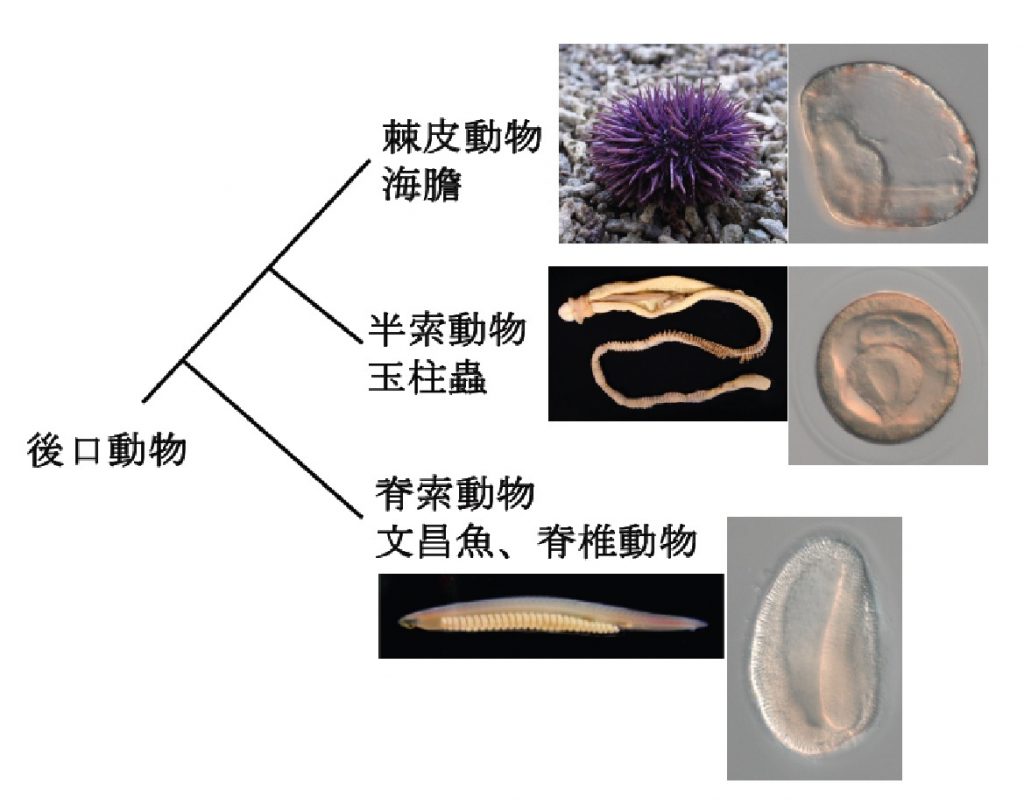“Who am I? Where did I come from? ”These are the questions that intrigue not only philosophers but also biologists. The evolutionary origin of our own Phylum – Chordata, has puzzled biologists for centuries. One of the novel characteristics that draws extensive discussion is that of the chordate central nervous system (CNS), which exists in a dorsoventrally inverse orientation relative to other bilaterally symmetric animals. Ever since Darwin published his theory of evolution, numerous hypotheses have been proposed to explain the evolutionary origin of chordate animals. However, the mechanistic basis for the inversion and its possible links to the evolutionary origin of the dorsal CNS remain elusive.
The research team led by Drs. Yi-Hsien Su and Jr-Kai Yu at the Institute of Cellular and Organismic Biology, Academia Sinica (Taiwan), tackle these questions by using hemichordates (acorn worm), echinoderms (sea urchin), and cephalochordates (amphioxus) as model organisms. Cephalochordates represent an early-branching chordate group, while hemichordates and echinoderms are the closest relatives of chordates. The research team found that in the hemichordate embryos, BMP signaling controls dorsoventral and neural patterning. Furthermore, alterations of BMP levels during early development caused pronounced morphological changes reminiscent of a proposed intermediate stage in the emergence of the chordate body plan. These findings provide a possible mechanistic basis to support the hypothesis that an inverse chordate body plan may emerge from a seemingly different body form by tinkering with the conserved embryonic developmental process. The study “BMP controls dorsoventral and neural patterning in indirect-developing hemichordates providing insight into a possible origin of chordates” has been published in June 2019 in the journal Proceedings of the National Academy of Sciences of the United States of America (PNAS).

Hemichordates and echinoderms are the closest relatives of chordates, and these three animal phyla are classified as the deuterostome animals. Comparative studies on the developmental mechanisms of these three animal groups are essential for understanding the evolutionary origins of the chordate body plan.
This study is funded by Academia Sinica and the Ministry of Science and Technology, Taiwan.
Web-link to the published paper: https://www.pnas.org/content/early/2019/06/11/1901919116
